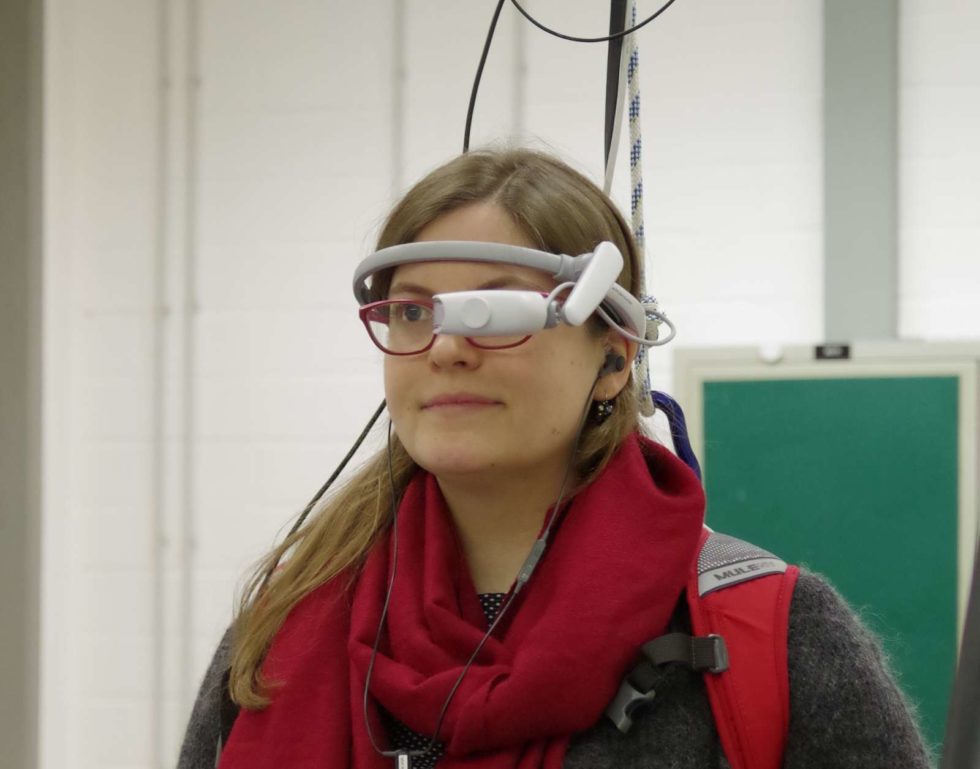Smart Devices are used in picking as Pick-by-Vision or Pick-by-Voice for instructions to provide information on the item and storage location exactly when the order picker needs it. The factor of cognitive ergonomics is extremely important here: The information should be displayed in the same way as the person can best process it mentally in order to avoid frustration.
Employees from the Clan “Cognitive Ergonomics” of the Center of Excellence compare the performance of test participants in a simulated picking task in the laboratory. The test participants walk or stand on a treadmill, receive instructions for solving mental tasks via the headset or data glasses and react by pressing a button on joysticks. The study focuses on the effects of gait and smart devices on mental factors such as cognitive flexibility and selective attention, both of which are highly relevant for finding items on the shelf.
Initial results show that subjects using the headset are less cognitively flexible, i.e. less able to switch back and forth between different tasks, but generally react more quickly and accurately. Although test subjects are more cognitively flexible with data glasses, they show a loss of selective attention.
The preferred use of a Smart Device therefore depends on the type of work task and the environment: In confusing storage areas, the presentation of information via the data glasses when walking may pose a potential safety risk. However, if the work is primarily done standing up, the use of data glasses has advantages over the headset.
An interview with Dr. Magali Kreutzfeldt on this topic can be found in the current issue of “Betriebliche Prävention”: https://www.beprdigital.de/ce/interview-smart-devices-unterstuetzung-oder-belastung/detail.html
Photo: Leibniz-Institut für Arbeitsforschung (IfADo)




